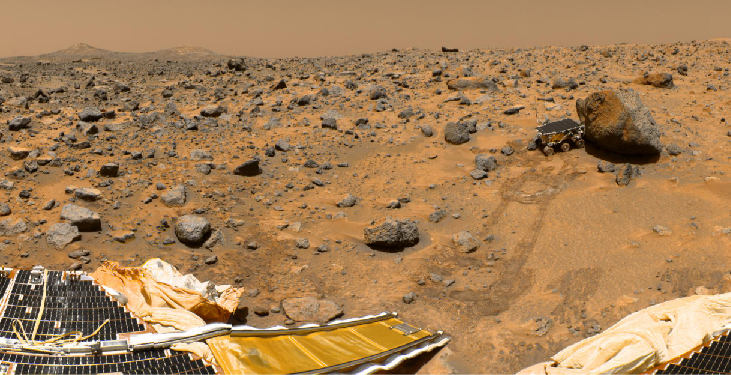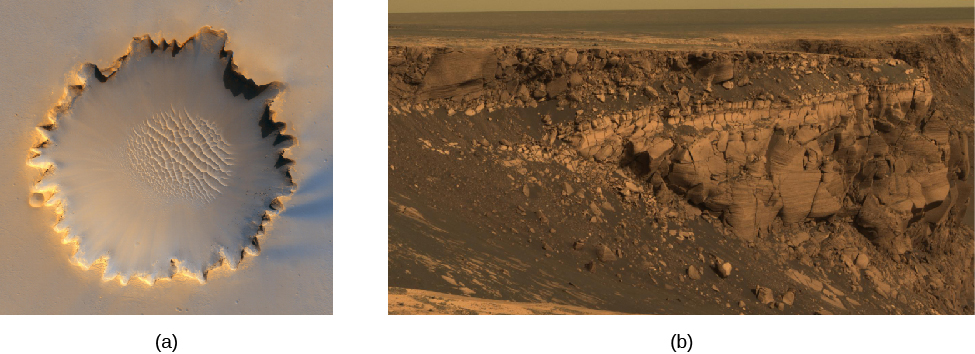| << Chapter < Page | Chapter >> Page > |
The situation changed in the 1990s as NASA began a new exploration program using spacecraft that were smaller and less expensive than Viking. The first of the new missions, appropriately called Pathfinder, landed the first wheeled, solar-powered rover on the martian surface on July 4, 1997 ( [link] ). An orbiter called Mars Global Surveyor (MGS) arrived a few months later and began high-resolution photography of the entire surface over more than one martian year. The most dramatic discovery by this spacecraft, which is still operating, was evidence of gullies apparently cut by surface water, as we will discuss later. These missions were followed in 2003 by the NASA Mars Odyssey orbiter, and the ESA Mars Express orbiter, both carrying high-resolution cameras. A gamma-ray spectrometer on Odyssey discovered a large amount of subsurface hydrogen (probably in the form of frozen water). Subsequent orbiters included the NASA Mars Reconnaissance Orbiter to evaluate future landing sites, MAVEN to study the upper atmosphere, and India’s Mangalayaan , also focused on study of Mars’ thin layers of air. Several of these orbiters are also equipped to communicate with landers and rovers on the surface and serve as data relays to Earth.

In 2003, NASA began a series of highly successful Mars landers. Twin Mars Exploration Rovers (MER), named Spirit and Opportunity , have been successful far beyond their planned lifetimes. The design goal for the rovers was 600 meters of travel; in fact, they have traveled jointly more than 50 kilometers. After scouting around its rim, Opportunity drove down the steep walls into an impact crater called Victoria, then succeeded with some difficulty in climbing back out to resume its route ( [link] ). Dust covering the rovers’ solar cells caused a drop in power, but when a seasonal dust storm blew away the dust, the rovers resumed full operation. In order to survive winter, the rovers were positioned on slopes to maximize solar heating and power generation. In 2006, Spirit lost power on one of its wheels, and subsequently became stuck in the sand, where it continued operation as a fixed ground station. Meanwhile, in 2008, Phoenix (a spacecraft “reborn” of spare parts from a previous Mars mission that had failed) landed near the edge of the north polar cap, at latitude 68°, and directly measured water ice in the soil.


Notification Switch
Would you like to follow the 'Astronomy' conversation and receive update notifications?